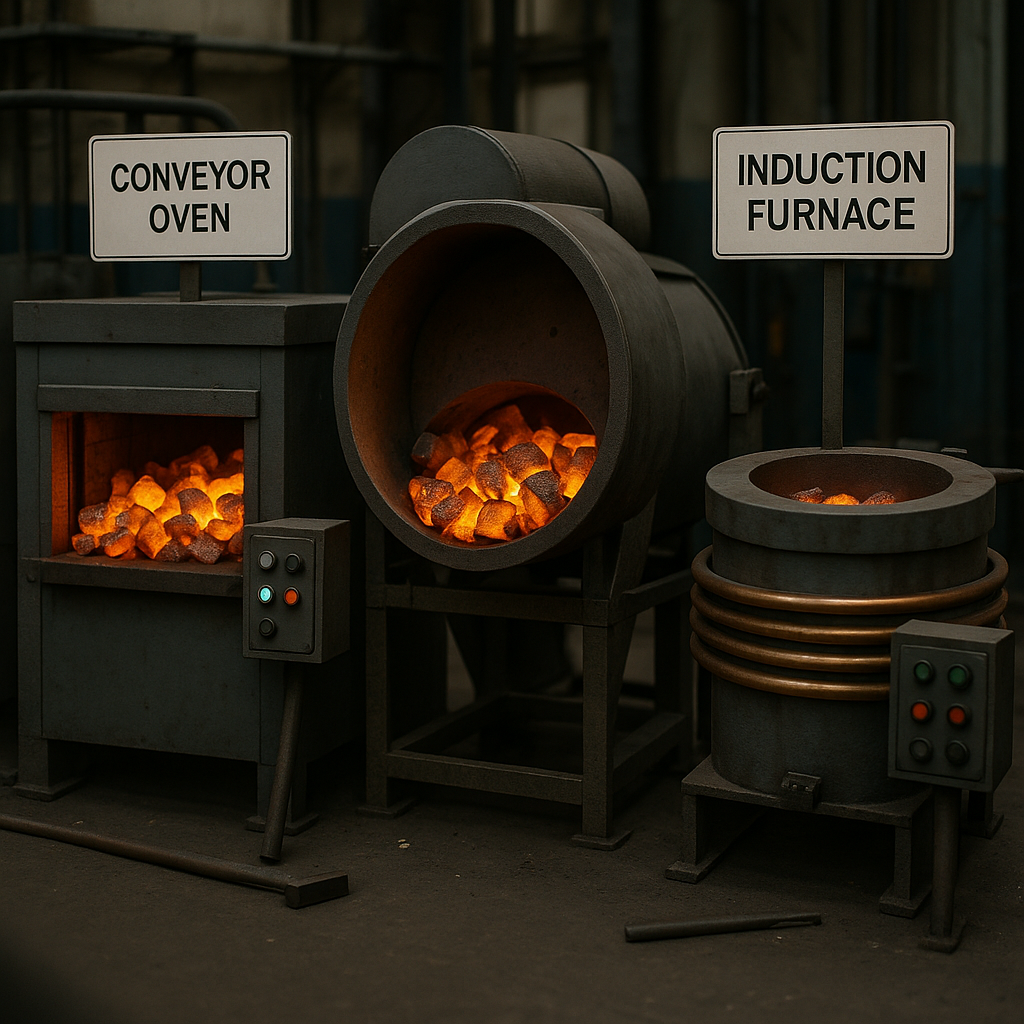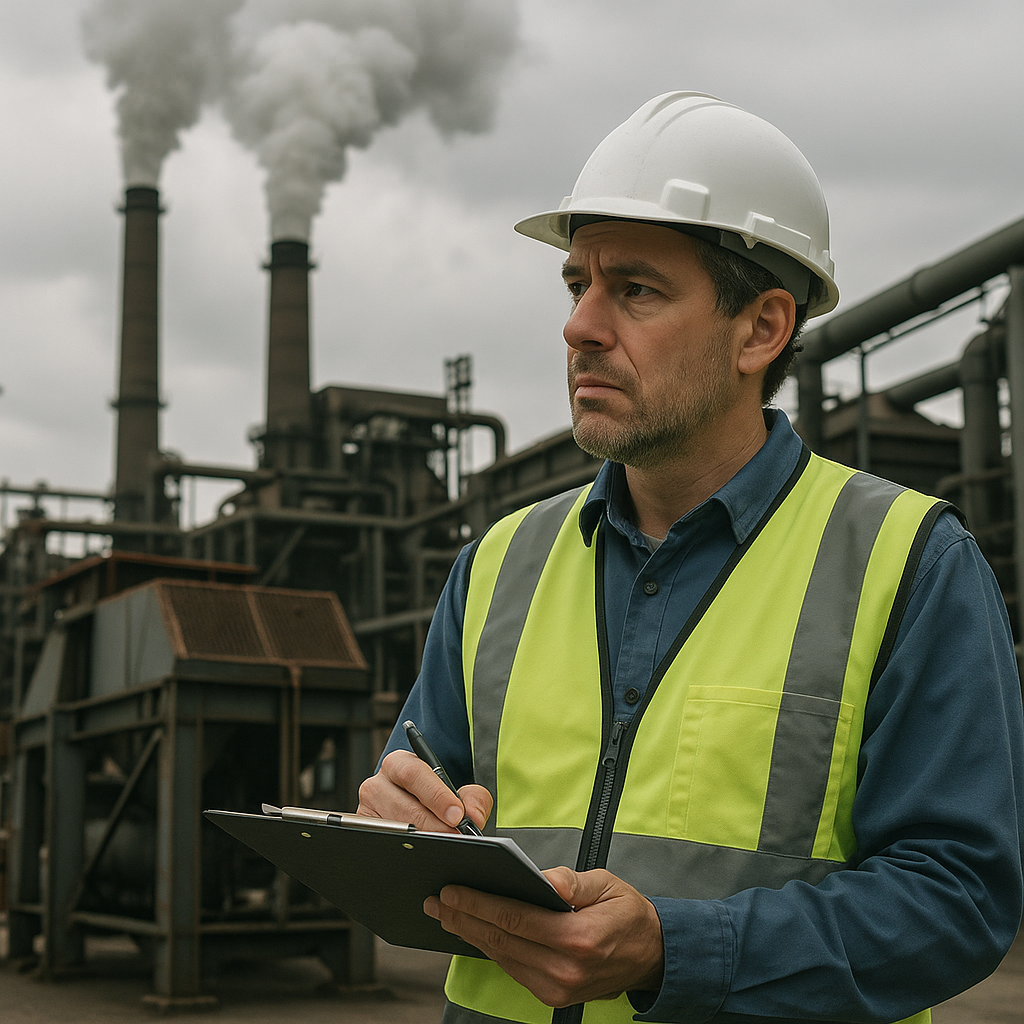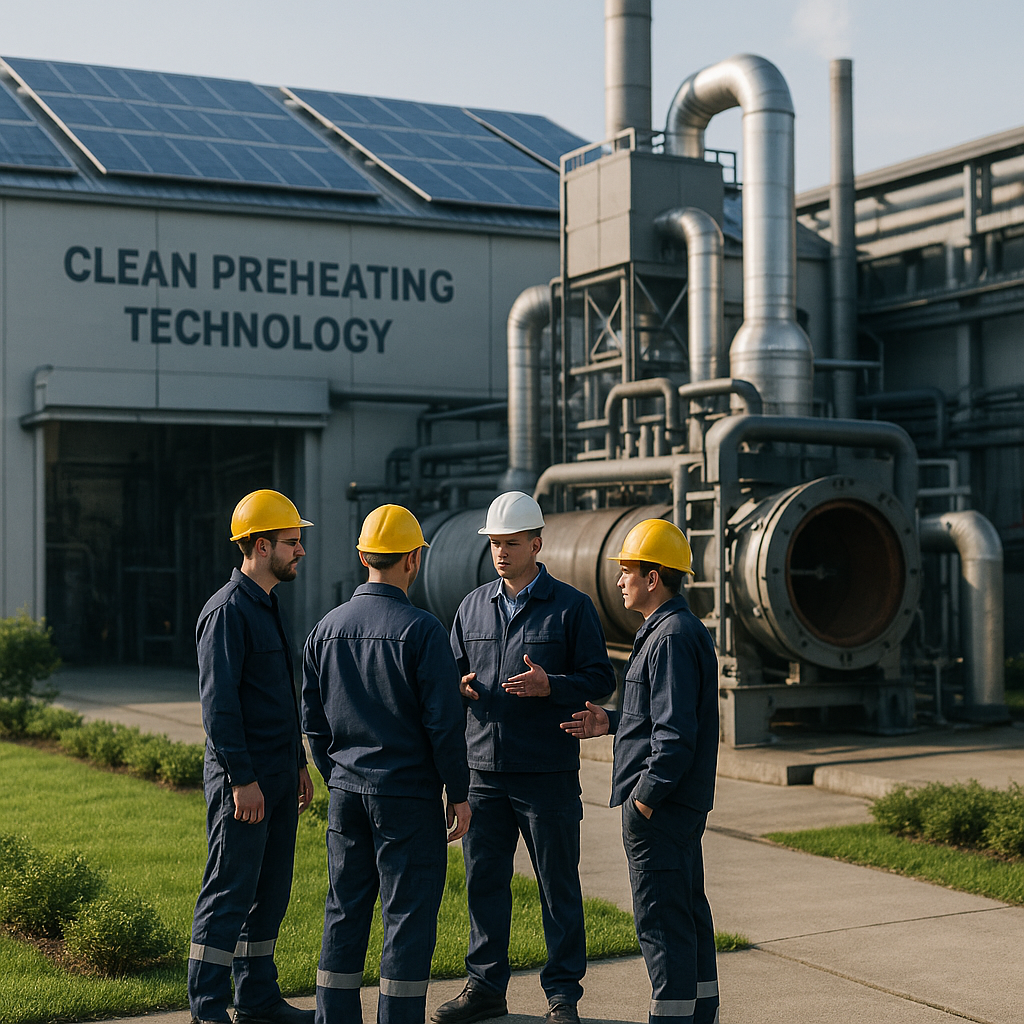5901 Botham Jean Blvd, Dallas, TX 75215
Scrap Metal Preheating: A Guide to Methods, Benefits & Challenges
October 22, 2025The scrap metal preheating process is a significant advancement in modern steelmaking. It involves heating recycled steel scrap before it enters an electric arc furnace (EAF) for melting. This method captures and utilizes high-temperature waste gases from the furnace to increase the scrap temperature before the melting stage.
Steel production requires substantial energy, with traditional EAF operations emitting off-gases at temperatures between 1200°C and 1500°C. Without recovery systems, these gases escape into the atmosphere, carrying away 15% to 20% of the total thermal energy, amounting to an energy loss of 80-120 kWh per ton of steel produced.
Scrap preheating systems effectively capture this waste heat. By increasing the scrap temperature before it enters the furnace, the process significantly reduces power consumption. This leads to a more efficient and environmentally responsible approach to steel production, conserving energy while maintaining high-quality output.
Why is Scrap Preheating Important in Steel Production?
In traditional Electric Arc Furnace (EAF) operations, a significant amount of high-temperature off-gas, between 1200°C and 1500°C, is emitted. Without recovery systems, this valuable heat escapes into the atmosphere, resulting in a waste of approximately 15-20% of the total thermal energy generated during steel production. This energy loss equates to about 80-120 kWh per ton of steel produced.
Scrap preheating systems address this inefficiency by capturing and repurposing the waste heat. They direct the high-temperature off-gas to preheat scrap metal before it enters the furnace. By increasing scrap temperatures from ambient to 600-800°F, the energy required for melting is significantly reduced.
The energy efficiency gains are both substantial and measurable. Plants that implement scrap preheating systems typically achieve energy savings of 13.5% to 20%, equivalent to 50-100 kWh per ton of steel produced.
Besides energy savings, scrap preheating offers additional operational benefits. Electrode consumption decreases by around 20% (0.15-0.3 kg per ton), and melting time is reduced by approximately 20%. This increased efficiency translates into heightened production capacity, with many facilities experiencing a 10-20% boost in output after implementation.
What Are the Key Advantages of Scrap Preheating?
Scrap preheating technology has significantly enhanced metal production processes by capturing waste heat that would otherwise dissipate into the atmosphere. This sustainable approach offers considerable environmental and economic benefits throughout the entire production cycle.
Energy efficiency is perhaps the most compelling advantage of scrap preheating systems. By using the heat from furnace off-gases to raise scrap temperatures before they enter the electric arc furnace (EAF), facilities can achieve energy savings of 13.5% to 20%. This equates to approximately 50-100 kWh per ton of liquid steel, a substantial reduction in a highly energy-intensive industry.
Beyond energy savings, scrap preheating offers several operational benefits:
- Electrode consumption reduction (20%): The preheated material requires less electrical energy to melt, reducing wear on valuable electrodes.
- Dust emission decrease (30%): Lower temperature differentials and controlled heating significantly reduce particulate emissions.
- Overall cost reduction (15-21%): Combined savings from energy, consumables, and operational efficiencies lead to substantial cost benefits.
- Melting time reduction (20%): Faster processing increases throughput capacity without needing additional physical infrastructure.
- Production output increase (10-20%): Shortened tap-to-tap times allow for more production cycles within the same timeframe.
- Higher efficiency in double-shell EAFs (up to 83% power utilization): Advanced preheating systems maximize thermal recovery and energy transfer.
Additional benefits include improved working conditions through reduced emissions, extended refractory lining life due to more consistent thermal profiles, and enhanced metal quality by removing moisture and volatile contaminants during the preheating phase.
The most effective preheating systems can raise scrap temperatures to 600-800°C before entering the furnace, dramatically reducing the energy required for complete melting. For steel producers facing increasing energy costs and environmental regulations, scrap preheating represents one of the most practical and immediate pathways to improved sustainability and competitiveness.
[[artifact_table]] Energy and Cost Savings from Scrap Preheating Systems [[/artifact_table]]What Are the Main Scrap Preheating Methods?

Scrap preheating is a highly effective energy conservation strategy in the steel recycling industry. By raising scrap temperatures before they enter the furnace, these systems capture waste heat that would otherwise be lost as high-temperature off-gas. Here’s a look at the primary methods used in modern steel production.
Basket Preheating Method
Basket preheating introduces high-temperature exhaust gases from the electric furnace directly into a preheating tank containing the scrap basket. The process requires careful temperature control to preserve basket integrity.
This method typically maintains inlet temperatures between 700°C and 800°C, with outlet temperatures ranging from 200°C to 300°C. While offering moderate energy savings of approximately 25 kWh/ton, it has notable drawbacks such as the emission of smoke and odors during the process.
Shaft Furnace Method
The shaft furnace method features a water-cooled shaft connected to the electric furnace cover. Scrap is loaded inside and preheated by high-temperature exhaust gases rising through the furnace hearth.
For continuous preheating during multiple heats, the lower section of the shaft furnace contains hooks to support and control the falling scrap. This method achieves energy savings of around 30 kWh/ton of steel. One significant drawback is its placement constraint—it must be positioned off-center to avoid the central electrode, leading to uneven heating and non-synchronized melting.
NSCF Process (Continuous Conveying Layer Preheating)
The NSCF process addresses uneven preheating issues in conventional conveyor systems. It features an enclosed conveyor belt with strategically placed exhaust gas outlets at the lower section, allowing gases to preheat the scrap from top to bottom.
This approach significantly improves thermal efficiency, raising scrap temperatures from below 100°C to above 400°C at depths of 600-700mm from the conveyor surface. It offers significant energy savings of approximately 65 kWh/ton of steel, making it more efficient than simpler methods.
Consteel Process
The Consteel process is among the most advanced scrap preheating technologies in use today. It includes a conveyor system that continuously transports scrap through a tunnel where it’s preheated by off-gases from the furnace.
Unlike batch-feeding methods, the Consteel process maintains continuous charging, with preheated scrap entering the furnace via a “hot heel.” This method improves energy efficiency and offers operational benefits, such as reduced tap-to-tap times and lower electrode consumption.
The system has demonstrated energy savings of 50-100 kWh/ton of liquid steel and has been successfully implemented at dozens of facilities worldwide, with more than 35 installations globally.
Shaft Furnace Continuous Installation
This advanced shaft technology places equipment components—receiving hoppers, exhaust pipes, preheating tanks, and pushers—above the furnace center. Preheated scrap is pushed to the electric furnace top center before falling into the furnace.
This setup offers remarkable energy savings of up to 138 kWh/ton steel, making it one of the most efficient preheating methods but with considerable implementation complexity.
Filling Layer Electric Furnace Method
This innovative approach continuously charges scrap around the electric furnace’s top electrode, creating a filling layer inside. This layer is then preheated by rising high-temperature exhaust gases.
A rotating magnet system directs scrap from the conveyor belt into the surrounding area of the furnace. An annular pipe in the furnace’s upper section ensures uniform gas flow and effective preheating; however, limitations related to scrap geometry and the need for highly heat-resistant loading equipment are challenges.
What Are the Environmental Challenges of Scrap Preheating?

Despite the energy efficiency and cost benefits of scrap preheating, this technology faces significant environmental challenges. Certain preheating methods can release harmful compounds during the process. Contaminated scrap often contains paints, plastics, lubricants, and coatings that decompose at high temperatures, producing problematic emissions.
The most concerning pollutants include dioxins, furans, polychlorinated biphenyls (PCBs), and various sulfides and chlorides. These organic compounds form during the thermal breakdown of coated scrap materials. Without proper treatment, their release poses serious risks to air quality and public health.
The formation of dioxins and furans is particularly troubling. These require specific conditions to form: carbon sources, chlorine, temperatures between 250-450°C, and catalytic environments. Once formed, they rank among the most toxic chemicals, with potential carcinogenic and mutagenic effects.
Regulatory responses vary globally, with countries having strict environmental regulations—particularly in Europe—often discouraging scrap preheating or implementing tight operational controls. In these regions, preference is given to alternative technologies like advanced off-gas cooling systems and post-combustion technologies, which minimize harmful emissions while recovering some heat.
The iron and steel industry has responded to these challenges by developing improved technologies. Modern systems such as the Consteel process incorporate secondary combustion chambers where gases are kept at temperatures exceeding 850°C for more than two seconds, ensuring complete combustion of pollutants and thermal incineration of noxious emissions prior to entering the gas cleaning system.
Another critical innovation is rapid gas cooling. After combustion at high temperatures, gases must be quickly cooled to prevent the reformation of dioxins at lower temperatures. This quenching process is crucial to prevent secondary pollution formation.
Surface cleaning technology combined with preheating offers a promising solution. By removing coatings and contaminants before heating, this approach significantly reduces the formation of harmful compounds. This technology increases opportunities for wider scrap utilization while addressing environmental concerns.
Conclusion: The Future of Scrap Metal Preheating in Steelmaking

Scrap metal preheating technology leads sustainable steelmaking practices by offering significant advantages for environmental protection and operational efficiency. By reducing energy consumption by up to 100 kWh per ton of liquid steel, this process decreases electricity usage while increasing scrap utilization rates. The ability to raise scrap temperatures to 600-800°F before entering furnaces substantially reduces carbon emissions, with some operations achieving up to 14,000 tons of annual greenhouse gas savings.
Integrating scrap preheating systems with renewable energy sources holds greater potential for sustainability. As steel production evolves toward greener practices, technologies like the Consteel process and Fuchs shaft furnace will become standard in modern melt shops. The economic benefits—including reduced operational costs, extended equipment life, and improved metal recovery—ensure that these environmentally beneficial technologies also provide substantial financial gains.
For comprehensive recycling solutions tailored to your metal processing needs, contact Okon Recycling at 214-717-4083.
